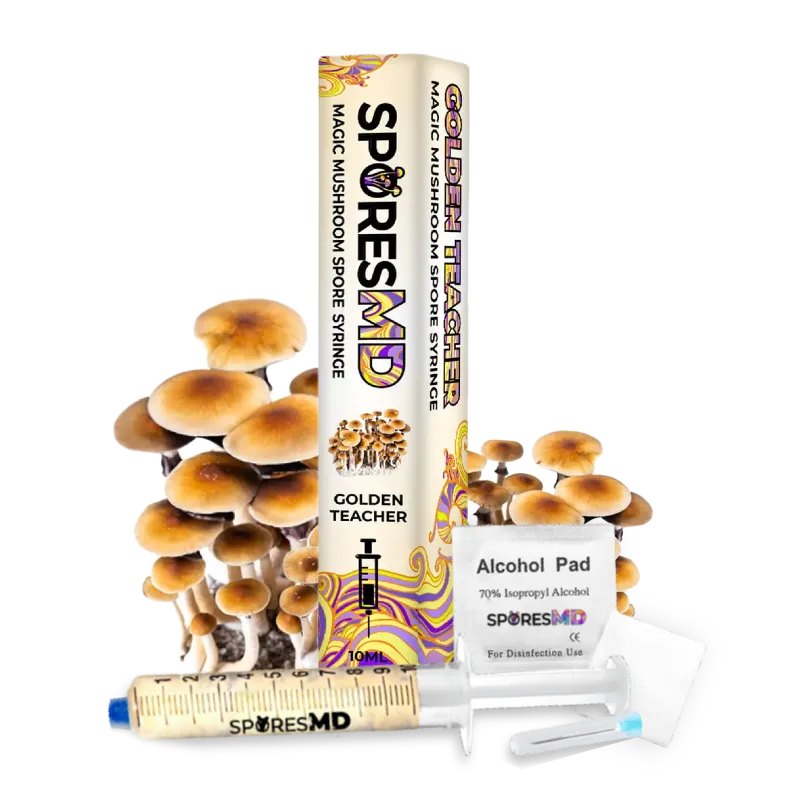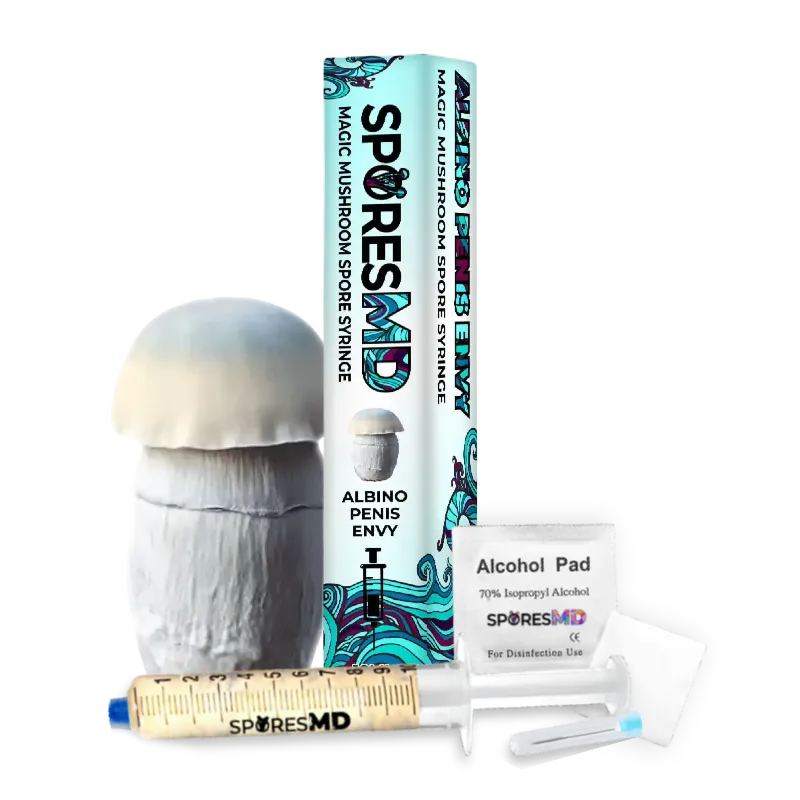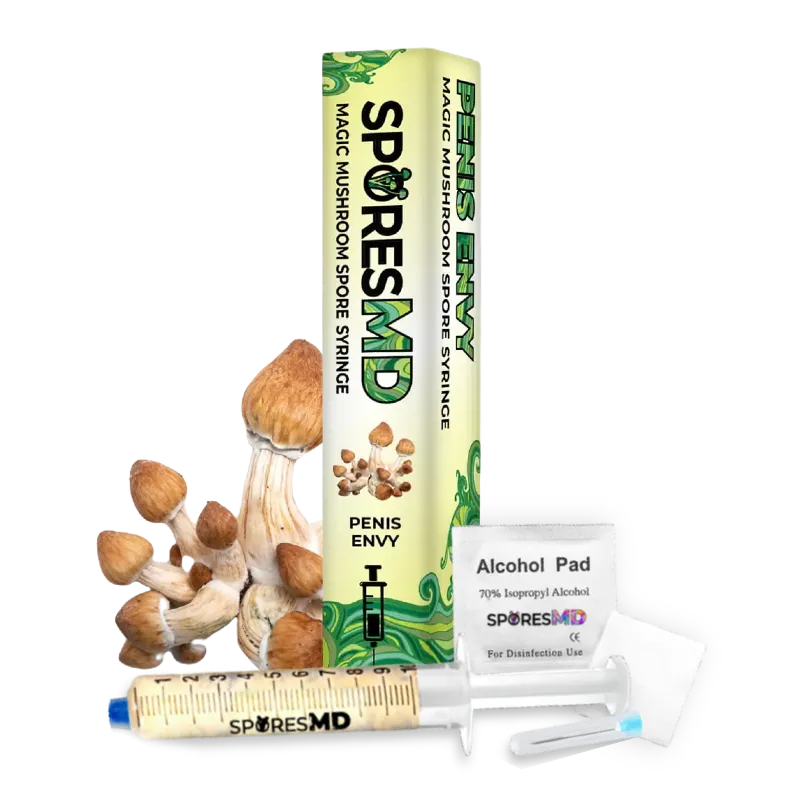Key Takeaways
- Mushroom spore germination takes anywhere from a few hours to several weeks, depending on the species and environmental conditions.
- Optimal conditions include temperatures between 70–75°F and humidity levels of 85–95%, with a nutrient-rich, sterilized substrate (you can buy pre-sterilized mushroom grow bags here).
- Faster germination times are seen in oyster mushrooms (5–7 days), while species like microscopy take 10–14 days, and Psilocybe cyanescens may take up to three weeks.
- Key factors influencing germination include temperature, humidity, substrate quality, and sterility to prevent contamination.
- Maintaining a controlled, sterile setup and ensuring species-specific requirements can significantly enhance germination rates.
- Post-germination care, such as substrate colonization and transition to fruiting conditions, is vital for successful mushroom cultivation.
Mushroom spores can take anywhere from a few hours to several weeks to germinate. The exact timeframe depends on the species and environmental conditions. Factors like temperature, humidity, and substrate play a crucial role.
For most species, ideal temperatures range between 70–75°F, with humidity levels at 85–95%. Some mushrooms, like oyster mushrooms, germinate in just 5–7 days, while others, like microscopy, may take up to two weeks. Knowing these details helps you create the perfect environment for faster results.
Whether you’re a beginner or an experienced grower, understanding germination times is key. It allows you to plan and troubleshoot effectively, ensuring success in your cultivation efforts.
Factors Affecting Mushroom Spore Germination
Several factors determine the successful germination of mushroom spores. These include temperature, humidity, substrate quality, and sterility in the environment.
Temperature and Humidity
Optimal temperatures range between 70–75°F (21–27°C). Cooler conditions may delay germination, while excessive heat fosters rapid but weak mycelium growth.
Maintain humidity levels at 85–95%. Low humidity dehydrates spores, preventing germination. Excessive moisture promotes competing microorganisms, disrupting the process.
Use a digital hygrometer and thermostat for precision control.
Substrate and Nutrient Availability
The substrate supplies essential nutrients for spore growth. Choose a substrate suited to the specific mushroom species, like grain or sawdust for Pleurotus ostreatus.
Sterilize the substrate to prevent microbial competition. Nutrient-rich materials enhance growth and produce healthy fruiting bodies.
Ensure substrate pH is compatible with mushroom type for reliable outcomes.
Sterility and Contamination Prevention
A controlled, sterile environment is crucial to avoid contamination. Contaminants such as bacteria and mold compete with the mushroom mycelium for resources.
Sterilize tools and containers using a pressure cooker, autoclave, or chemical agents. Use sterile techniques during inoculation and spore storage.
Cleanliness during the process ensures successful spore germination and mycelium production.
Understanding the Germination Process
Mushroom spore germination is a multi-stage process, influenced by environmental factors and the characteristics of the spores. Each stage is critical to successful cultivation, from hydration to mycelium development.
Hydration and Activation
Spores require water to germinate. During hydration, spores absorb water through germ pores, swelling and becoming elastic to initiate germination. This can take hours to days, depending on the species and conditions.
The activation phase follows hydration. Enzymes break down the outer spore wall, triggering metabolic activity. Environmental factors like temperature (70–75°F) and humidity (85–95%) optimize these processes for species such as Agaricus bisporus, which typically germinates in 7–10 days.
Growth of the Germ Tube
The germ tube emerges as the spore activates. It elongates by absorbing nutrients from its surroundings, seeking a substrate for support.
In optimal conditions, species like microscopy exhibit germ tube growth within 10–14 days. Substrate quality, sterility, and consistent temperatures ensure efficient tube development and prevent contamination.
Development of Mycelium
Mycelium forms as the germ tube matures and branches into a network of hyphae. This network infiltrates the substrate, extracting nutrients vital for further growth.
For Pleurotus ostreatus, mycelium development spans weeks, depending on substrate and moisture levels. Maintaining sterility during this stage ensures healthy mycelium and prepares for the next cultivation phase.
Avoid contamination by sterilizing substrates, tools, and your work environment. This safeguards mycelium viability and improves mushroom yields through proper care and planning.
Optimizing Conditions for Faster Germination
Providing a controlled environment significantly improves the germination time for mushroom spores. Temperature, humidity, and substrate preparation are critical factors.
Preparing the Ideal Environment
- Temperature Control
Maintain 70–75°F (21–24°C), as most mushroom spores germinate best in this range[1][3][5]. Use a thermostat or heating device to ensure consistency.
- Humidity Levels
Keep humidity between 85–95%. A humidifier or hygrometer helps maintain optimal moisture without promoting contamination.
- Sterilized Setup
Sterilize all equipment and substrates to prevent microbial interference. Wear gloves and masks to reduce contamination risks.
- Lighting Requirements
Set up in dark or dimly lit areas since strong light can impede spore activity.
Methods to Enhance Germination Rates
- Agar Plate Method
Inoculate spores (you can buy microscopy spore syringes or liquid cultures) onto sterilized agar plates. This method provides a nutrient-rich medium for spores to thrive.
- Monitor Substrate Nutrients
Ensure the substrate has a nutrient balance and neutral pH for higher success rates, as poor substrates delay germination.
- Adjust Based on Species
Research species-specific needs. Oyster mushrooms germinate in 5–7 days, while microscopy may require 10–14 days, even in optimal conditions[1].
- Contamination Checks
Inspect for signs of contaminants. Resterilize if germination slows unexpectedly.
Take proactive measures like routine humidity checks or resealing growth chambers to prevent delays.
Common Challenges in Spore Germination
Certain obstacles, like slow germination or contamination, frequently hinder successful mushroom spore cultivation. Understanding these challenges helps optimize conditions and improve outcomes.
Slow Germination and Its Causes
Slow germination occurs when environmental factors don’t meet species-specific needs. Low temperatures, inadequate humidity, or improper substrates often contribute to delays.
- Temperature: Temperatures outside the optimal 70–75°F range slow metabolic activity.
- Substrate Nutrients: Poorly balanced nutrients or wrong pH levels inhibit nutrient absorption.
- Species Variation: microscopy averages 10–14 days, while Pleurotus ostreatus only takes 5–7 days under similar conditions.
Research each species to identify ideal germination factors and fine-tune your setup accordingly.
Addressing Contamination Issues
Contamination blocks spores from germinating by introducing harmful microorganisms. These contaminants can outcompete or kill mushroom spores.
- Airborne Contaminants: Laminar flow hoods or still air boxes protect spores during inoculation.
- Substrate Sterilization: Properly sterilized or pasteurized substrates prevent microbial competition.
- Tools & Hygiene: Sterilized tools and clean hands maintain a germ-free environment.
Preventative measures, like using sterile techniques, ensure a contamination-free environment to boost spore germination success.
Timeframe for Mushroom Spore Germination
Mushroom spores typically germinate within a timeframe that ranges from hours to weeks. Environmental conditions, species, and substrate quality influence the process, making each case unique.
Variations Across Mushroom Species
Different mushrooms display varying germination rates due to genetic and environmental factors.
- Oyster Mushrooms: Germinate in 5–7 days, depending on substrate quality.
- microscopy: Typically takes 10–14 days under ideal conditions.
- Psilocybe Cyanescens: May require up to three weeks for full germination.
Research species-specific needs to improve your success rate.
Average Germination Periods
Most spores germinate in 24–48 hours if conditions are optimal.
| Mushroom Species | Time to Germinate | Conditions (Temp/Humid) |
|---|---|---|
| Oyster Mushrooms | 5–7 days | 70–75°F / 85–95% humidity |
| microscopy | 10–14 days | 70–75°F / 85–95% humidity |
| Psilocybe Cyanescens | 14–21 days | Similar to above |
Keep temps between 70–75°F and humidity at 85–95% to maximize germination speed. Inspect substrates closely to avoid contamination or nutrient imbalances.
Post-Germination Steps
After germination, mushroom spores transition into mycelium growth, setting the stage for full colonization and eventual fruiting.
Transferring to Substrate
Prepare the substrate by pasteurizing or sterilizing it to eliminate competing organisms. Use sterilized tools to cut agar-covered mycelium into small segments, and incorporate them into the nutrient-rich substrate.
Maintain strict sterility throughout. Contaminated substrates hinder colonization. Ensure humidity stays between 85–95% and temperatures range from 70–81°F for mycelium growth, according to cultivation research.
Cultivating Mycelium to Fruiting
Mycelium colonizes the substrate over weeks or months, depending on the species. Once fully colonized, it shifts to producing fruiting bodies when exposed to lower temperatures and increased humidity.
Keep substrate conditions stable to avoid contamination by molds or bacteria. With proper care, mushroom pins will emerge, signaling the transition to harvestable fruiting bodies.
Conclusion
Understanding the germination process of mushroom spores is key to successful cultivation. By creating optimal conditions and maintaining strict sterility, you can significantly improve your chances of healthy mycelium growth. Each species has unique requirements, so tailoring your approach ensures better results.
With patience, proper techniques, and attention to detail, you’ll be on your way to cultivating thriving mushrooms and achieving your growing goals.

![How Long Does It Take for Mushroom Spores to Germinate? [Complete Guide with Timelines]](https://sporesmd.com/wp-content/uploads/2024/03/how-long-does-it-take-for-mushroom-spores-to-germinate-featured-image.webp)



